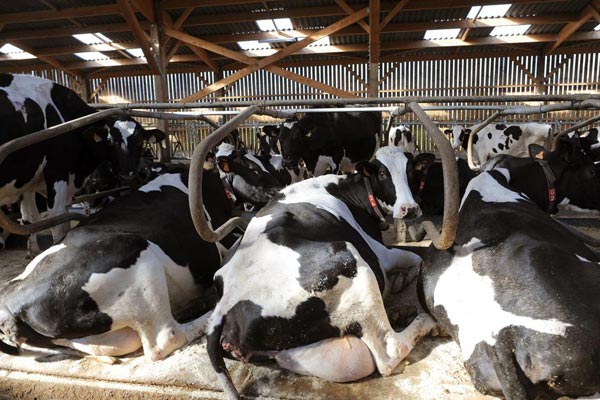The behaviour of a cow signals its health status. Here is a checklist to guide you so that you can respond to management, veterinary and nutritional adjustments of a cow.
Alertness: A healthy cow should be alert with full stomach and glossy skin.
Temperature: A normal cow should have a temperature of between 38 and 39 degrees Celsius. Cold ears, for instance, indicate milk fever or problems in blood circulation.
Breathing: A healthy cow should have normal breathing of between 10 to 30 breaths per minute. Faster breathing rate indicate heat stress or fever.
Rumen fill: The left side of the stomach should protrude when a cow has eaten well. When you press the fist into the rumen, it should contract firmly about 10 to 12 times for five minutes.
Digestion rate: This can be told from the animal’s droppings. If you feed on very large feed particles, undigested parts become clearly visible in the manure.
Rumination: Rumination should occur for seven to 10 hours per day, 40 to 70 times on each cud. Less time in rumination calls for ration adjustments.
Hooves: A healthy cow stands still and straight while eating. If she tips or walks with lame gait, then there is poor hoof health or poor floors.
Manure: It should not be too be soupy, not very flat when it falls on a hard surface or form stiff balls and should never have undigested particles.
Udder: Udder suspension ranges from very tight to very pendulous. Weak udder attachment results in pendulous udders that make it difficult for a calf to nurse and is due to poor support in the ligament that ties the udder to the cow’s body.
Teats: Cows’ teats range from very small to large and are balloon shaped. This is subject to assessments of teat length and circumference. Teats that are oversize are difficult for newborn calves to nurse hence limiting colostrum, leading to higher incidences of scours or decreased immunity levels of the newborn calf. Good teats have natural colour and are flexible.
Legs and locomotion: The condition of a cow’s legs dictates her movement. Skinned or bruised heels are mainly caused by poor bedding materials or hoof infection. A cow should be able to stand and walk normally.
Body Condition Score (BCS): You can do score assessment just by visual estimate of body energy reserves and the key areas to look for include hooks, pins, ribs, backbone and tail-head. This exercise can help to attain improved reproduction and feed efficiency.
The times to conduct score are at 60 to 90 days before calving, weaning, calving and beginning of the breeding season. BCS allows for sorting cows according to their nutritional needs hence improving nutrition programme efficiency.
An extremely emaciated cow has the tail-head and ribs projected prominently with no fat detectable over the backbone and hips. A thin cow has the ribs less sharp but definable with little fat on spine.
A moderate cow has a good overall appearance and palpable fat cover on the ribs. A good cow has fleshy condition carrying a considerable spongy fat over her ribs with round tail-head. A fat cow is very fleshy and over-conditioned with large fat deposits over her ribs and around tail-head; the backbone is almost impossible to palpate.
An extremely fat cow has the hips buried in fat tissue and looks completely blocky. She may have impaired mobility and her bone structure no longer visible and pelvis impalpable even with very firm pressure.
Housing: The body of a cow really tells much about its owner. If one side of the cow has dung smears, then the bedding material is poor and should be changed. If possible, provide cow mattresses that go for Sh2,000.








